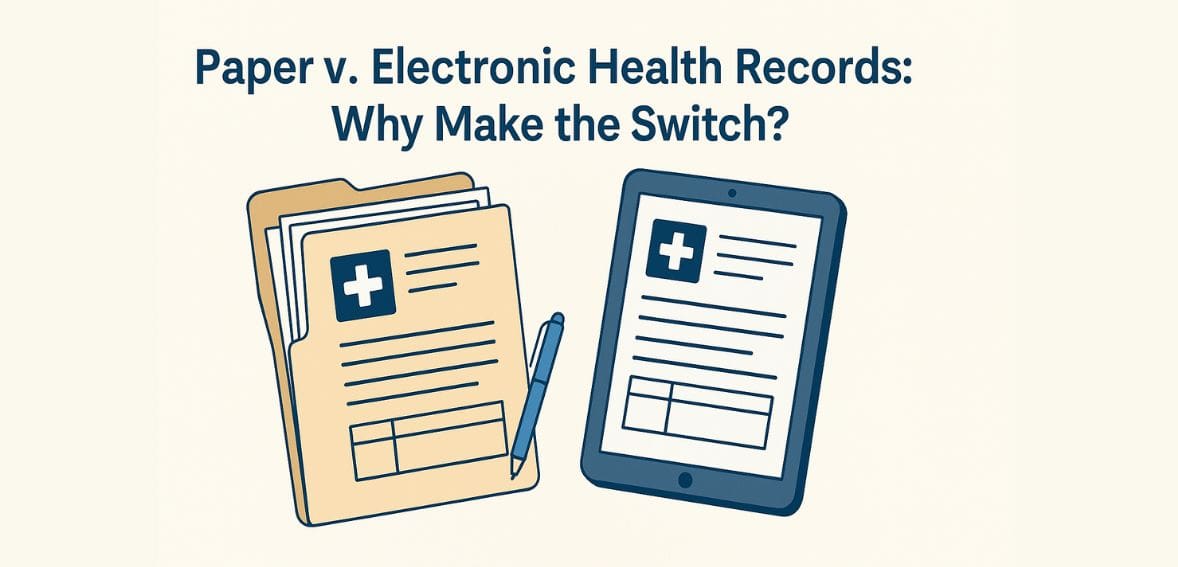
Paper vs Electronic Health Records: Why Make the Switch?
Within the changing face of healthcare, the shift away from paper-based record systems toward electronic health records (EHRs) is among the most dramatic technological changes in the practice of medicine. Although paper records have been available to the medical community for centuries, the era of the digital revolution has brought capabilities that completely changed the nature of how healthcare information is stored, accessed, and used.
This shift is not just about substituting pixels for paper—it’s about envisioning the entire healthcare information environment as a way to enhance patient outcomes, optimize operational effectiveness, and keep pace with the increasingly sophisticated needs of contemporary medicine. So, let’s take a look at the ins and outs of paper vs electronic health records to understand why you should make the switch right now!
The Legacy of Paper Records
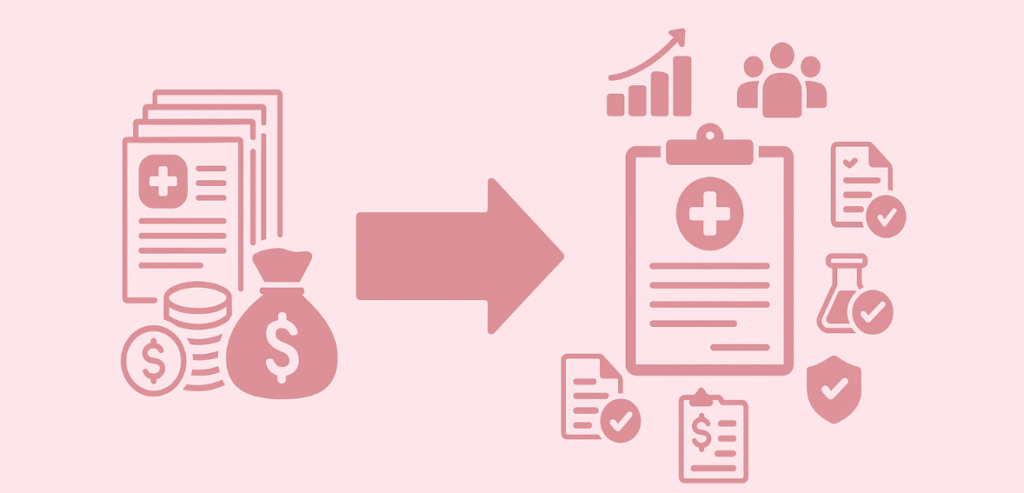
Before investigating the benefits of electronic systems, it is useful to recognize the traditional role of paper records within healthcare. Medical professionals have, for centuries, recorded patient details in hand-written notes, charts, and files. Such physical records provided ease of use and required little technical expertise, and they presented a well-understood medium that health practitioners could quickly interpret and manipulate.
Paper records have remained in most healthcare environments because they are seen as being reliable. They won’t crash, don’t need software upgrades, and are still available during power failures. Clinicians created effective workflows around paper documentation, with individualized systems for retrieving and organizing information. The physicality of paper enabled rapid annotation, sketching, and highlighting—features that some clinicians still find priceless.
But as medical complexity mounted, the shortcomings of paper systems became more and more evident. Medical records expanded from brief notes to detailed sets of lab results, imaging studies, specialist reports, medication lists, and treatment plans, extending years or decades of care. The volume of information was so great that it overwhelmed physical storage capacity and taxed retrieval systems, creating problems that paper-based methods simply could not surmount.
The Breaking Point
The tipping point for most healthcare providers was the understanding that paper charts inherently limited access to information. A patient’s record could exist in only one location at any given time, causing delays if several providers had to access information simultaneously. Documents often got lost or misplaced, requiring staff to spend considerable time searching for vital data. In an emergency, an inability to have immediate access to past information threatened patient safety.
As specialties became increasingly interdependent, the demand for unhindered information exchange increased exponentially. Referrals between specialists involved photocopying and faxing sections of charts, producing disjointed records and the potential for error. For patients being treated in more than one facility, information gaps became perilous, with practitioners making decisions based on incomplete medical histories.
The need for healthcare information stretched beyond immediate patient care, quality improvement, regulatory requirements, research, and population health management, all of which called for systematic examination of clinical data—functions that became hugely time-consuming with paper records. The time spent reviewing hand charts for quality measures or research criteria circumscribed the scope and effectiveness of these valuable functions.
The Electronic Alternative
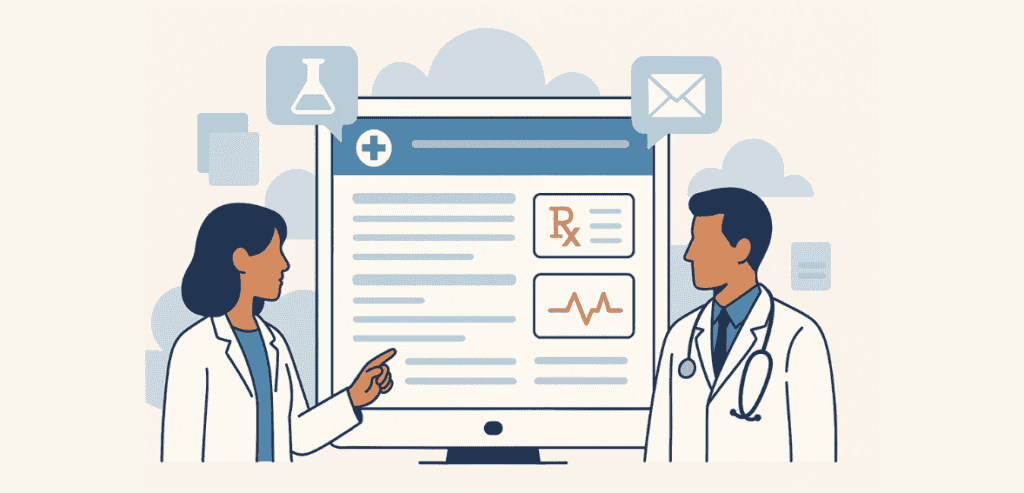
Electronic health record systems became an answer to such growing challenges. Although early electronic systems were only concerned with billing and scheduling, contemporary EHRs cover the whole range of clinical documentation and workflow management. Current systems have integrated platforms to document patient encounters, order tests, prescribe medication, view results, and send messages to other providers—all under a secure electronic setting.
The shift to EHRs has been hastened in recent years by a mix of regulatory incentives, technology advancements, and increasing appreciation for their potential benefits. Research repeatedly shows that properly installed electronic systems can enhance the quality of care, decrease errors, improve efficiency, and boost provider and patient satisfaction. However, the process of making the change requires thoughtful consideration of both the opportunities and pitfalls associated with doing so.
Enhanced Accessibility and Availability
Maybe the most direct benefit of electronic records is how accessible they are. While paper charts can exist in only one location at a time, EHRs can be accessed simultaneously by multiple approved users. A primary care provider can view a patient’s chart while a specialist can access the same data at the same time but from another site. This availability in real-time obliterates delays and frustration in searching out physical charts.
EHRs also overcome geography. Through secure remote access, providers can view patient data at home, on the road, or when needed for emergency consults. During the COVID-19 pandemic, this option was a lifeline as healthcare systems quickly shifted to telehealth platforms so that providers could provide continuity of care with minimal face-to-face interaction.
For the patient receiving care in more than one setting, electronic records allow information sharing among providers. When implemented well, EHRs can share data cleanly between primary care offices, hospitals, specialty clinics, pharmacies, and other healthcare organizations. This connectivity saves redundant testing, eliminates medication errors, and gives all providers access to complete medical histories.
Improved Organization and Searchability
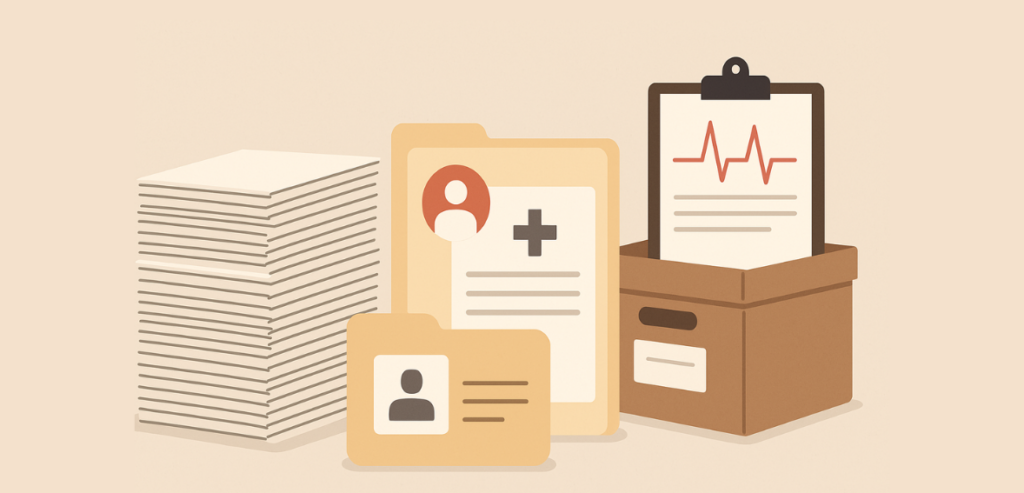
The ability of electronic systems to manage organization is a second major step up from paper records. Instead of rummaging through file folders of datesorted documents, users can select instantly by document type, date, provider, or clinical parameter. Want to see all of the blood pressures over the past year? It takes a couple of clicks to create a trend report. Wondering about possible drug interactions? The system will flag problematic combinations automatically.
Search capability enables information retrieval to shift from a labor-intensive activity to an instant one. Rather than paging through pages to find a particular consultation note or test result, users can search by keyword, provider name, or date range. Such an ability is extremely useful for patients with long and detailed medical histories or complicated conditions necessitating routine referral to past data.
EHRs also perform well in structuring data into presentations that support clinical decision-making. Laboratory values may be presented as trends over time, vital signs may be plotted to show patterns, and medication histories may be shown with corresponding lab results. These graphical presentations alert the provider to notice subtle changes that would otherwise be missed in the text-laden paper record.
Enhanced Patient Safety and Quality
Patient safety is perhaps the strongest rationale for electronic records. Medication errors, a primary cause of avoidable harm in healthcare, can be minimized with electronic prescribing systems that check automatically for allergies, interactions, and proper dosing. Computerized provider order entry systems have been found to decrease medication errors by as much as 80% by reducing illegible handwriting and allowing real-time decision-making support.
EHRs can enhance preventive care through automated reminders and population health management capabilities. Computers can flag patients who are in need of screening, vaccinations, or monitoring of chronic diseases and assist providers in closing gaps in care that would otherwise be missed in paper systems. These anticipatory capabilities reverse the paradigm of reactive medicine to preventive care and could potentially result in better outcomes and lower costs.
Electronic documentation’s standardization encourages consistency of care. Order sets and documentation templates may include evidence-based guidelines to ensure that providers take into consideration best-practice approaches for prevalent conditions. When a new evidence comes to light, these templates can be system-wide updated, quickly sharing best practices across an organization.
Efficiency and Workflow Optimization
Although the initial rollout of an EHR may necessitate major workflow changes, more mature electronic systems tend to make operations more efficient. Templates and intelligent forms can automate documentation, minimizing the time spent entering standard information. Voice recognition software is becoming increasingly sophisticated so that providers can dictate directly into the system instead of writing or typing.
Administrative activities that used to take hours of staff time can be streamlined or automated. Refills on prescriptions can be done electronically, lab reports can be automatically inserted into patient files, and routine letters can be written using templates filled with patient-specific data. These efficiencies enable staff to devote more time to direct interaction with patients and care coordination.
For organizational management, EHRs bring unparalleled visibility to operations and results. Dashboards can present key performance indicators in real time, enabling administrators to detect bottlenecks, monitor quality measures, and monitor productivity. This visibility enables data-driven decision-making and ongoing quality improvement.
Paper vs Electronic Health Records: Financial Considerations

The financial rewards of transitioning to electronic records also accrue over the long term, beyond one-time implementation, hardware, and software costs. Although the up-front investment is enormous—frequently between $15,000 and $70,000 per provider, based on the sophistication of the system—the long-term financial rewards frequently offset the cost.
Cost savings typically emerge from several areas:
- Lowered storage costs for paper records and removed paper chart supplies
- Reduced worker requirements for document management, filing, and access
- Fewer redundant tests because more information is available
- Reduces transcription costs through direct documentation
- Improved coding accuracy and charge capture
- Reduced malpractice premiums with higher-quality documentation
In addition, electronic systems allow for more precise and effective billing. Charge capture capabilities of the system guarantee services are properly documented and billed, and coding assist functions allow providers to enter the correct diagnostic and procedure codes. These functions can have a profound impact on revenue cycle management, particularly in smaller practices where coding errors can have serious financial implications.
Challenges and Considerations
In spite of the strong advantages, becoming electronic is not without significant challenges. There are enormous planning, investment, and organizational change management efforts in the rollout. Employees must be trained in detail on new work processes, and productivity is usually subpar in the initial transition period. Long implementation times and surprise costs beyond initial estimates are reported by some organizations.
Usability remains a problem with the majority of electronic systems. Poor interface design can impose documentation time and cognitive load on providers, with potential for burnout. It can be clumsy to navigate among different parts of the record, and redundant clicking or scrolling can be maddening for those accustomed to the flexibility of paper documentation.
Security and privacy concerns take on new forms with electronic systems. Although paper records may be physically locked away in cabinets, electronic data must have advanced technical safeguards to ensure that others cannot access them. Healthcare organizations have to incur expenses on strong security systems to ensure patient information is not accessed by unauthorized individuals and to meet HIPAA standards.
System reliability and downtime planning must also receive special attention. When electronic systems go down owing to technical problems or maintenance, the day-to-day functioning of health care can get drastically affected. Organizations must formulate advanced contingency plans in order to facilitate continuity of care in such situations.
Making the Transition Successfully
Thoughtful System Selection
Beyond the single focus on cost or functionality, successful implementations begin with intense organizational needs and workflow analysis. Engaging the users in the acquisition process promotes adoption and satisfaction.
Leadership Commitment
Effective rollouts never begin with price or functionality solely in mind; they begin rather with a zealous consideration of organizational needs as well as workflow concerns. Engaging end-users enhances take-up and job satisfaction.
Comprehensive training
Effective training programs go beyond initial software orientation to include workflow redesign and optimization methods. Ongoing support through super-users, help desks, and refresher training allows personnel to continue developing expertise.
Phased Implementation
Instead of trying a “big bang,” effective organizations try to install EHR systems incrementally, leaving room for revision and adjusting as they go. This reduces risk and enables learning along the way.
Continuous Improvement
The most effective organizations see implementation as merely the beginning, rather than the end, of their EHR process. Continuous monitoring of use of systems, workflow productivity, and satisfaction is used to feed back into optimization continuously.
The Future of Health Information
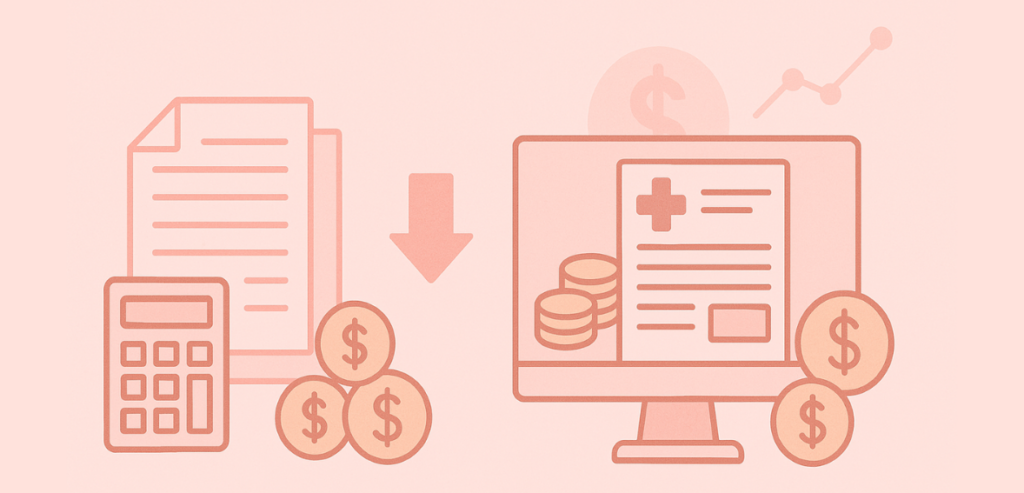
As health information technology continues to improve, electronic records become more advanced. Artificial intelligence and machine learning programs are now starting to take raw clinical data and turn them into useful information. Predictive analytics can determine patients likely to deteriorate or be readmitted so that early intervention can be made. Natural language processing is starting to make the utilization of unstructured clinical notes more convenient, making narrative data more analytically beneficial.
Patient engagement software is also growing at a very fast pace. Patient portals allow direct access to health data, safe messaging to doctors, scheduling of appointments, and refilling of prescriptions. These products enable patients to become more proactive in their care and facilitate better communication between visits.
Interoperability—the ability for different systems to exchange and use information—is a work in progress, but genuine strides are being made. Exchanging information based on standards is increasingly becoming the norm, and different electronic systems are exchanging information more easily. As these technologies continue to mature, the vision of seamless information exchange across the healthcare system is closer than ever to being a reality.
Conclusion
The transition from paper to electronic health records is a basic change in the storage and application of healthcare information. In spite of the reality that paper systems supported medicine for several centuries, they cannot support the needs of modern delivery of healthcare. Electronic records offer unprecedented possibilities for access to information, organization, patient safety, and operational effectiveness.
The shift from paper to pixels isn’t easy. Implementation requires a lot of investment, planning, and organizational change. But for healthcare organizations that are committed to providing high-quality, efficient care in an increasingly complex world, the question is no longer whether, but how.
As technology evolves, electronic health records will increasingly be more than documentation systems and will become active systems supporting clinical decision-making, population health, and patient engagement. Those organizations that transition successfully today will be positioned to realize these capabilities in a manner that enhances outcomes and the quality of the patient and provider care experience.